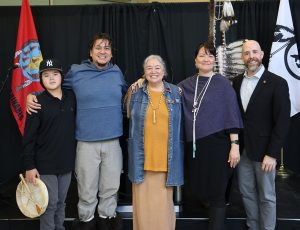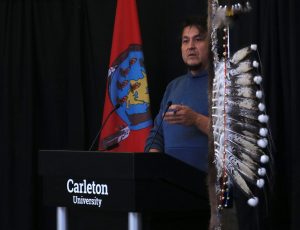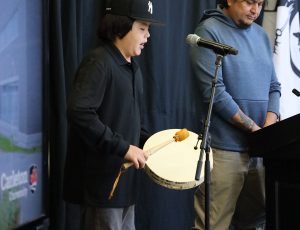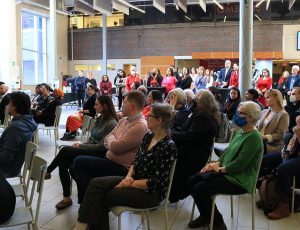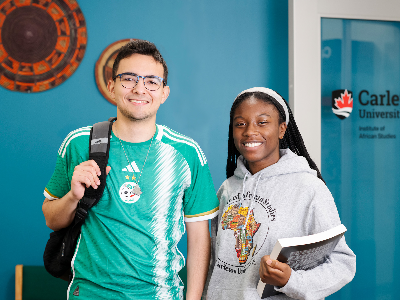By Jane van den Dries
Photos by Terrence Ho and Cara Garneau
On Feb. 14, Carleton University held a naming ceremony to celebrate and officially unveil the name Nideyinàn (pronounced nih-DAY-in-nahn), an Algonquin word meaning “our heart” that has been bestowed upon the university for the building formerly called the University Centre.
The naming initiative, launched in February 2021 by President Benoit-Antoine Bacon, was shaped by a recognition of the need to better reflect the university’s diversity in its academic mission and campus operations. The new name was chosen and gifted to the university by Algonquin community members, following a consultative, community-led process guided largely by the Algonquin Advisory Council.
Students, staff, faculty and community members filled the Nideyinàn Galleria for the event which was bookended by songs performed by Odeshkin Thusky from Kitigan Zibi and emceed by Philip Macho Commonda, Algonquin Community Liaison Officer in the Carleton Centre for Indigenous Support and Community Engagement.
During a smudging ceremony, Algonquin Elder Barbara Dumont-Hill shared her reflections about the new name’s significance.
“Nideyinàn will make us think about our hearts, and when we think about our hearts, we are better human beings because that’s how we feel,” said Dumont-Hill.
“Our greatest listening appendage is not our ears, but our hearts. They are the engine of our bodies and make everything work well and this is what this Centre is all about.
“We have a lot to learn and a lot to teach.”
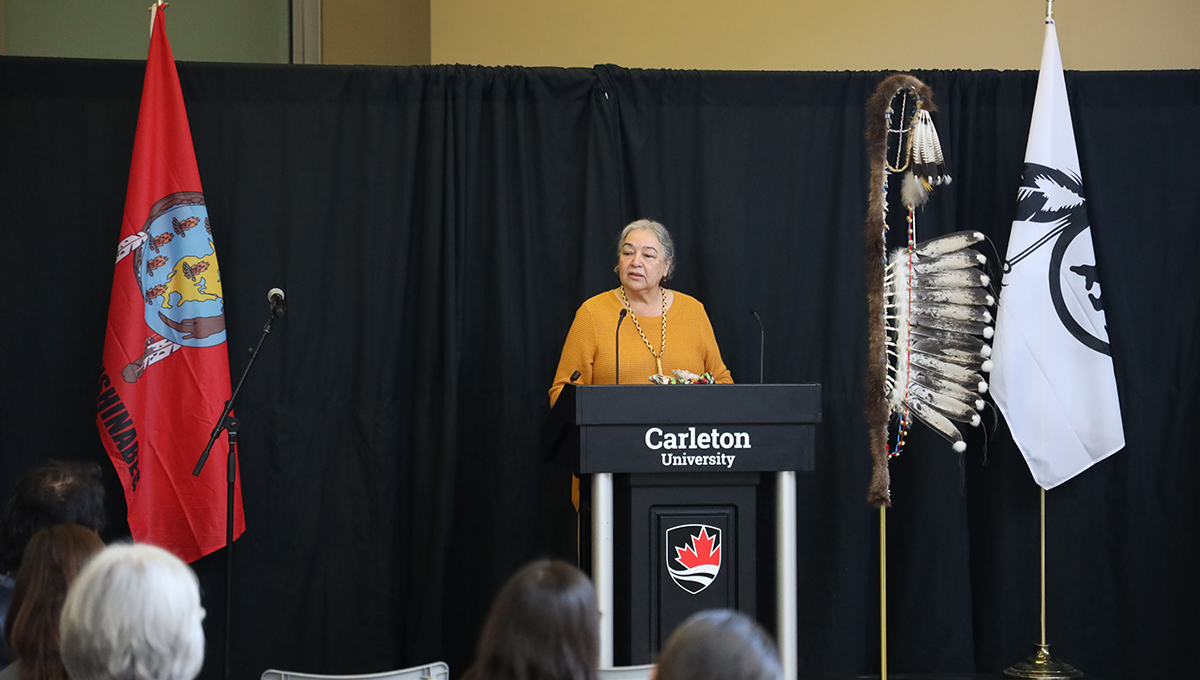
Elder Barbara Dumont-Hill shares her reflections about the name Nideyinàn (Photo: Terrence Ho)
President Bacon shared that the adoption of a meaningful Algonquin name for one of Carleton’s most central buildings is one way that the university is embodying an acknowledgment that the land on which the Carleton campus is located is the unceded and unsurrendered territory of the Algonquin nation.
“When the name was first shared with me, I was struck by its profound meaning and beauty,” he said. “For better or for worse, universities are temples of the mind and this new name will encourage us as an institution to better balance what we think in our minds with what we feel and who we are in our hearts.”
President Bacon also affirmed the university’s commitment to live up to the new name and provide stewardship in a good way for Nideyinàn.
“We will go beyond the adoption of the name itself and commit to additional activities to accompany the name,” he said.
“We will infuse this space with cultural indicators and continue to be guided by the Algonquin Advisory Council and community in these efforts.”
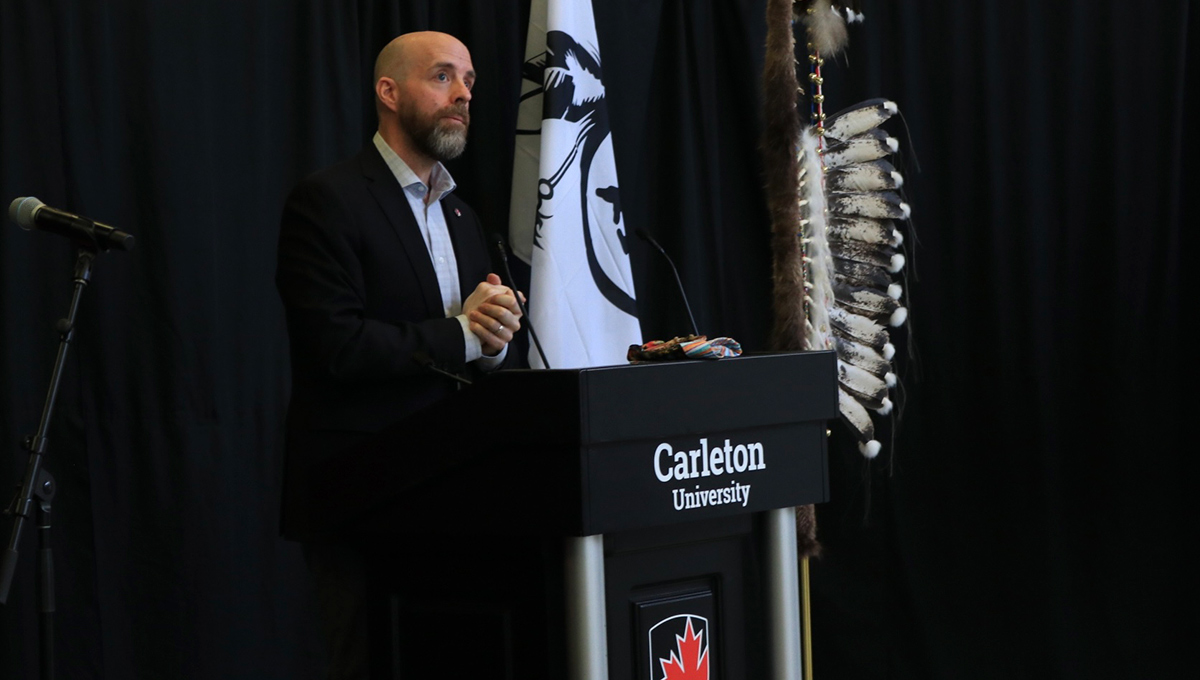
President Benoit-Antoine Bacon speaks during the Nideyinàn naming ceremony (Photo: Cara Garneau)
The naming of Nideyinàn demonstrates an important step in Carleton’s ongoing commitment to reconciliation and better relationships with Indigenous Peoples on and off campus, as outlined in the Kinàmàgawin (Learning Together) Indigenous Strategy. The adoption of the new building name addresses Kinàmàgawin call to action 24:
We call for further enhancing the visibility of Indigenous Peoples, cultures and ways of knowing on campus: for example, the inclusion of Indigenous members of the Carleton community in art purchases, building renovations, the naming of buildings, building construction and landscaping.
The naming process for Nideyinàn was co-chaired by the same campus leaders who co-chaired the process that led to Kinàmàgawin: Kahente Horn-Miller, Associate Vice-President, Indigenous Teaching, Learning and Research; Benny Michaud, Director, Centre for Indigenous Support and Community Engagement; and Jerry Tomberlin, Provost and Vice-President (Academic).
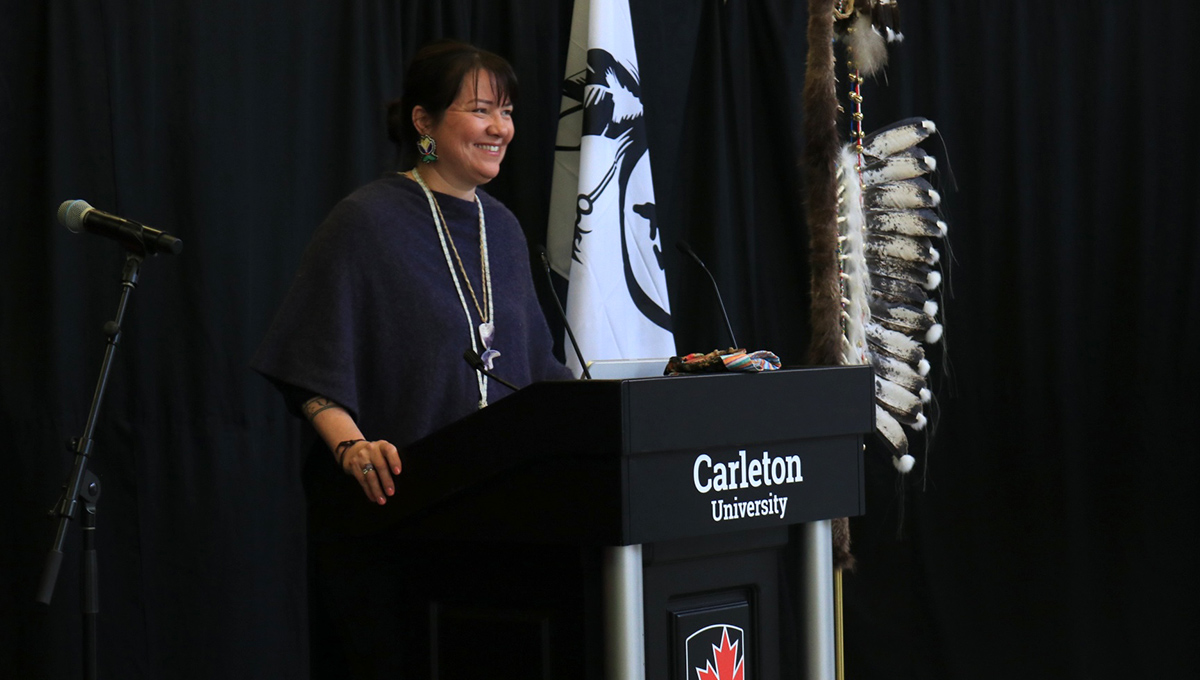
Associate Vice-President (Indigenous Teaching, Learning and Research) Kahente Horn-Miller speaks during the Nideyinàn naming ceremony (Photo: Cara Garneau)
Horn-Miller pointed to other ongoing activities being undertaken beyond the new building name as part of the university’s collective efforts to engage in reconciliation with Indigenous Peoples.
“There are many other efforts taking place at Carleton, such as the outstanding work of the Centre for Indigenous Support and Community Engagement, the Collaborative Indigenous Learning Bundles team, the Ānako Indigenous Research Institute, the work of our Indigenous faculty across campus, and of course, the support of our allies and our friends,” said Horn-Miller.
“As we move forward, take the time to reflect on what Nideyinàn means to you and teach it to each other because as you do so, it will contribute to the community that we are and help to build it much longer for future generations.”
Thursday, February 23, 2023 in Buildings, Community, Indigenous
Share: Twitter, Facebook
